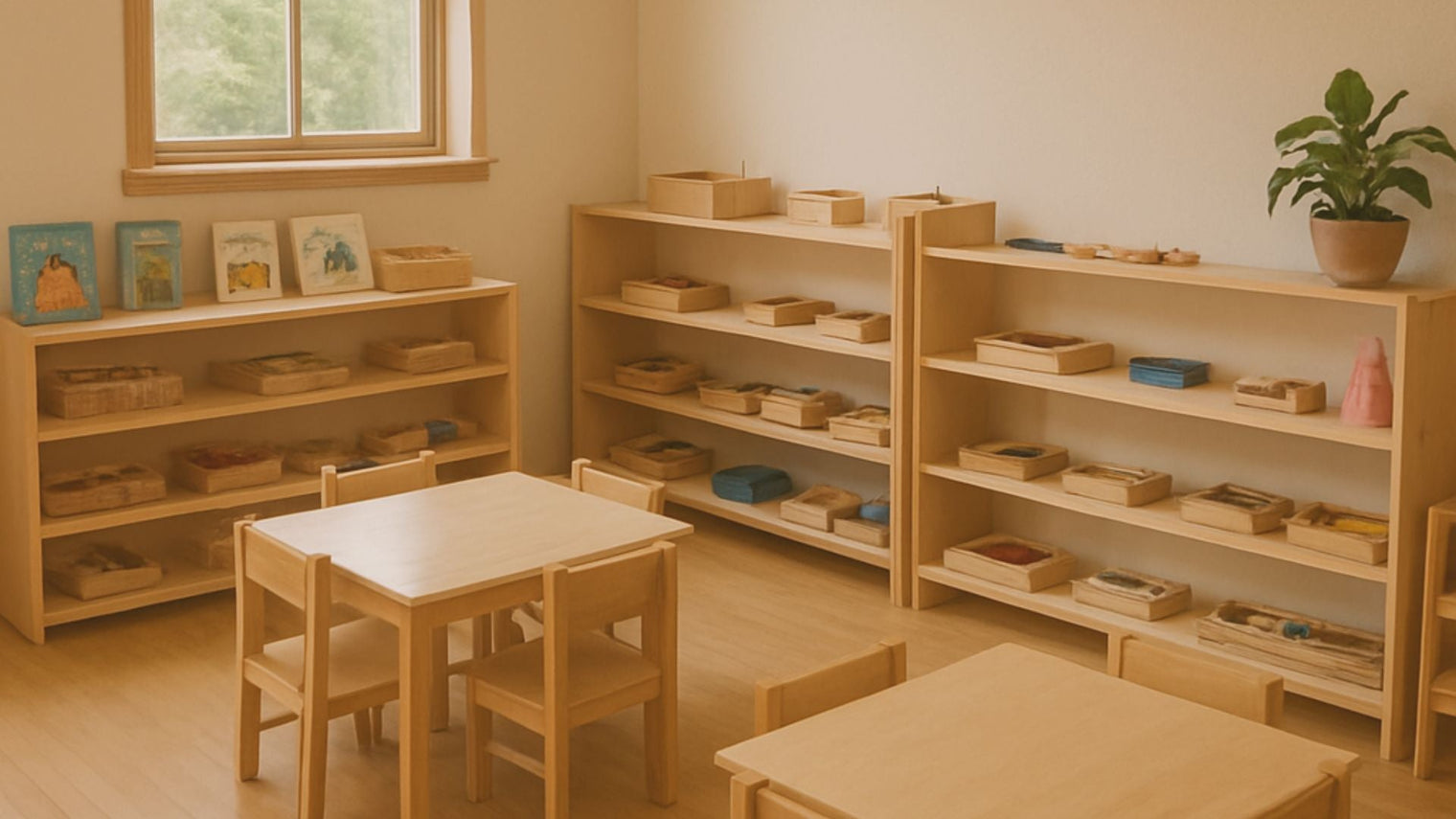Creating a space where children can explore, learn, and grow independently is one of the best gifts you can give them.
At the heart of this approach lies a simple but powerful piece of furniture: the Montessori floor bookshelf.
Designed to be low to the ground and child-friendly, these shelves encourage little ones to choose their own books, explore stories at their own pace, and develop a lifelong love of reading.
But with so many options available, how do you choose the right one?
The perfect Montessori bookshelf goes beyond just holding books—it becomes a tool for independence, confidence, and creativity.
Let’s walk through what to look for, why it matters, and how the right design can transform play and learning in your home.
Why a Low Montessori Floor Bookshelf?
Unlike traditional bookshelves, Montessori bookshelves are specifically designed with young children in mind.
They are typically low to the ground, making it easy for children to see and reach items on their own.
This design not only promotes independence but also helps cultivate decision-making skills as children select their own books and toys.
Encouraging Independent Play
Independent play is a crucial aspect of a child's development. It fosters creativity, problem-solving skills, and self-confidence.
A low Montessori floor bookshelf supports this by offering children the autonomy to explore their interests without constant adult intervention.
By having their materials within reach, children are empowered to take charge of their learning and play experiences.
Features to Consider When Choosing a Montessori Bookshelf

Safety and Durability
Safety is paramount when choosing furniture for children. Look for bookshelves made from sturdy, non-toxic materials. Ensure that all edges are smooth and rounded to prevent injuries. Additionally, the bookshelf should be stable and securely anchored to the wall to avoid tipping.
Size and Accessibility
The bookshelf should be proportionate to a child’s size, allowing them to easily access all items. Typically, Montessori bookshelves are no taller than a child’s shoulder height, ensuring they can independently choose books or toys without assistance.
Aesthetic Appeal
While functionality is crucial, the bookshelf should also complement the overall design of the room.
Choose a design and finish that aligns with your aesthetic preferences and the environment's décor.
A well-designed bookshelf can enhance the beauty of a room while serving its practical purpose.
Flexibility and Versatility
Consider a bookshelf that can grow with the child.
Adjustable shelves or a modular design can be beneficial, allowing the bookshelf to adapt as the child’s interests and needs evolve.
This flexibility ensures long-term use and value.
How a Low Montessori Floor Bookshelf Supports Development
Cognitive Development
By facilitating easy access to a variety of books and educational materials, a Montessori bookshelf supports cognitive development.
Children can engage with materials that challenge their thinking, expand their vocabulary, and enhance their understanding of the world.
Physical Development
Reaching for and handling books and toys on a low shelf encourages fine and gross motor skills.
Children develop hand-eye coordination and dexterity as they navigate their environment, selecting and returning items to the shelf.
Emotional and Social Development
By promoting independence, a Montessori bookshelf helps build self-esteem and confidence.
Children learn to make choices and solve problems on their own, skills that are essential for emotional and social development.
Additionally, when children engage in shared reading or play, they develop important social skills such as cooperation and communication.
Incorporating Montessori Bookshelves in Various Settings
Classrooms
In an educational setting, a Montessori bookshelf can be a central feature in a reading corner or play area.
It allows children to independently select materials that interest them, fostering a love of learning and exploration.
Homes
For interior designers, incorporating a low Montessori bookshelf into a family home can create a child-friendly and stylish space.
It can be used to organize books, toys, and art supplies, keeping the area tidy while allowing children the freedom to explore.
Therapy Rooms
Pediatric occupational therapists can use Montessori bookshelves to provide children with access to therapeutic materials that support their developmental goals.
The bookshelf can be tailored to include items that address specific needs, such as sensory toys or fine motor activities.
FAQs
What age is a Montessori bookshelf best for?
They’re perfect for toddlers and preschoolers, typically starting around 12 months when children begin reaching for books independently.
How many books should I place on the shelf?
Aim for 8–12 books at a time. Too many choices can overwhelm young children. Rotating books weekly or monthly keeps things exciting.
Do I need a forward-facing bookshelf, or is a regular one okay?
Forward-facing is ideal because children recognize book covers long before they can read titles. It encourages independent choice.
Can a Montessori bookshelf hold toys, too?
Yes, though it’s best to dedicate it to books for clarity and order. If you’d like multi-purpose storage, consider separate low shelves for toys.
How do I make the bookshelf part of a reading routine?
Place it in a cozy, accessible spot and spend time reading together daily. Over time, your child will naturally begin choosing books independently.
Final Thoughts
A Montessori floor bookshelf is more than furniture—it’s an invitation to curiosity, independence, and the joy of reading.
By selecting the right height, design, and materials, you’ll create a space where your child feels empowered to explore stories on their own.
At Dannico Woodworks, we’re committed to helping parents build spaces that inspire learning and growth. Every shelf we make is a step toward independence, confidence, and creativity.
So, what story will your child discover first when they pick a book all on their own?


